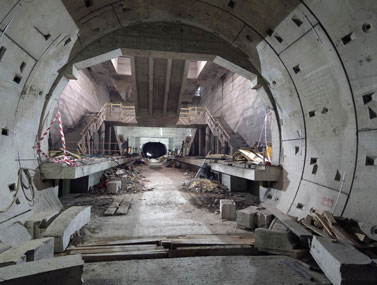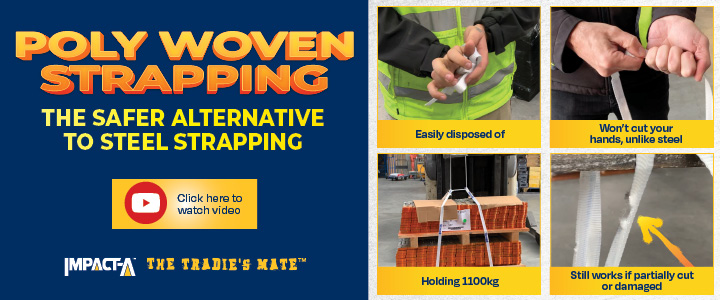When it comes to waterproofing, it’s essential to use the correct solution with the right products and a compliant design.
By Frank Leggett
There’s no one solution for waterproofing as each job has its own preparation, application and specific product. Whether it’s a job that’s below ground, above ground, internal or external with negative or positive pressure, it’s important to use the correct technique and technology for the appropriate situation.
“The old adage, fail to prepare, prepare to fail is absolutely spot on,” says Colin Picton, product segment specialist for Waterproofing & Sealants at Fosroc. Delivering construction solutions for building and infrastructure projects across the globe, Fosroc offers a huge range of waterproofing solutions from sheet systems to liquid applied membranes. “Preparation and application are crucial. Our liquid systems are seamless, conformable, flexible, fast and relatively simple to apply. But they still need the correct prep and application.”
DRAINAGE
Drainage is an important element of any waterproofing design. While a successful outcome depends on the structural design, the substrate and how many layers of waterproofing is being applied, drainage is vital to the success of a system.
“If you can move the water away, you’re taking the pressure off the system and allowing the waterproofing to do its job,” says Picton.
It is essential that waterproofing is done right the first time. If the system fails, coming back and correcting the issue is costly and difficult.
“It’s well known that 80 per cent of maintenance costs on major projects is spent on water ingress,” says Picton. “It’s an inherent risk and compliance in terms of Australian standards is taken very seriously.”
EXTERNAL ABOVE GROUND
Balcony and external living spaces are classified as external above ground areas and require a particular type of waterproofing. This can be membrane style material and it’s important to ensure it has the correct properties such as elongation and moisture vapour transmission rates.
“Waterproofing these types of structures is covered by AS4654,” says Picton. “Part one covers materials and part two covers the design of the structure and the application. It lists the correct preparation, where waterproofing should start and stop, how far up an up-stand or parapet it should go, and how many coats are required, along with other key factors.”
Successful waterproofing largely depends on the quality of the materials. Fosroc materials are certified by the CSIRO and BRANZ.
“In the past, other suppliers have claimed their material complied with code AS4654 but that’s based on their own internal testing,” says Picton. “If they don’t have official certification, compliance will be an issue. Waterproofing is such a critical element, it’s imperative that compliance certificates are made available.”
PROJECTS
Waterproofing on large projects involves dealing with a wide range of complex and unique challenges. Tunnels, and particularly tunnels that traverse underneath Sydney harbour, need waterproofing of an extremely high quality.
“The variances can be large depending on the performance requirements of the specification,” says Matt Sipek, market manager of Waterproofing & Roofing at Sika Australia. Sika is a chemicals company specialising in the development and production of systems and products for bonding, sealing, damping, reinforcing and protecting. They are involved with many large construction and development projects.
“Many tunnel projects are government-funded and a warranty is typically for 25 years, but we have to prove durability of 125 years. When you’re waterproofing a tunnel, you have to get it right the first time.”
When building the harbour tunnels, the engineering challenge of going through the hard rock is considerable.
The tunnel then has the whole weight of the water contained in Sydney Harbour pushing down. Water always takes the path of least resistance so if it can find a way in, it will.
HARBOUR TUNNELS
Sika was used to waterproof the first Sydney Harbour tunnel which opened to traffic more than 30 years ago. It’s also involved with the new Sydney Metro train services through the CBD, as well as the Metro West.
“We’ve recently completed the main station box at Sydney Central Metro at Platform 16,” says Sipek. “This was probably the toughest waterproofing project in the country.”
The project was a top-down build. Normally, a large hole is dug, the station box is built in the hole and then the area is back filled. For this build, the roof was created first then excavation went down about 30 metres through Sydney sandstone. Sandstone is very porous, allowing water to run everywhere.
Waterproofing in this situation is extremely challenging. When creating a waterproofing system in a tunnel, it’s always a sheet membrane, generally polyvinyl fluoride or thermoplastic polyurethane. These sheets are hot welded together with specialised equipment. “The fantastic thing about these membranes is that when they’re hot welded, the weld becomes stronger than the parent material,” says Sipek.
In a tunnel or station box, there is often a metre of concrete in front of the waterproofing membrane. Additionally, there’s always a primary, secondary and tertiary back-up.
“We would typically recommend a combination of swellable water stops and an injection hose,” says Sipek. “The injection hoses are placed at crucial joints and gives us the ability to inject an acrylic resin after the concrete structure has been poured. We’ve found this system works very well.”
No matter what the size of the project, the secret to successful waterproofing is preparation, application with the correct product, and ensuring the appropriate codes are met.






